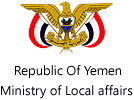
 http://www.english.hadhramaut.info
Ms. Zahra Al-Junied Senior Librarian & Exhibition Coordinator on the Hadrami Diaspora in Singapore
[The Source: The Yemen Post/hadhramaut.info - 04/04/2009]
http://www.english.hadhramaut.info
Ms. Zahra Al-Junied Senior Librarian & Exhibition Coordinator on the Hadrami Diaspora in Singapore
[The Source: The Yemen Post/hadhramaut.info - 04/04/2009]
 The National Library of Singapore is organizing an
The National Library of Singapore is organizing an
exhibition on the Hadhrami Diaspora in February 2010. It will cover various aspects of Arab life in Hadhramaut, where most of the early Arabs in Singapore originate and focus on the culture and contributions of the Arabs in Singapore and South East Asia. The 6-month exhibition in English will cover 700 square metres exhibition gallery at the National Library Building.
As part of the research and curatorial work, two of the officers from the National Library in Singapore, namely Ms. Zahra Al-Junied and Ms. Cheryl Low are currently in Yemen in order to seek cooperation and assistance in gaining access to relevant material for the exhibition. Excerpts from the interview with Ms. Zahra Aljunied, Senior Librarian Digital Resources and services at the National Library of Singapore.
YP: National Library of Singapore will be organizing an exhibition on Hadhrami Diaspora starting February 2010. Would you like to tell us about this exhibition?
Zahra Al-Junied: The Hadhrami Diaspora exhibition is an initiative by the National Library of Singapore. It comprises an exhibition, an international conference and supporting activities that focus on the culture and contributions of Arabs in Singapore.
The exhibition will feature both current and historical information including showcasing of artifacts, documents and photographs from local and international Arab associations, as well as multi-media presentations. Interactive activities and heritage trails organized jointly with partner organizations will create a new exhibition experience.
YP: Which aspects will be covered?
ZJ: Following aspects will be covered in exhibition:
Journey of the Arabs from the Middle East to SE Asia and Singapore
This segment aims to introduce the life of the Arabs in the Middle East, (in particular, Hadhramout from where the early Arabs who came to Singapore originated), the routes taken by them when traveling to Southeast Asia, and the challenges faced by the Arabs in their newfound home in Singapore and Southeast Asia.
Contributions of the Early Arabs in Singapore & Southeast Asia
Also the contributions of the early Arabs who came to Singapore and Southeast Asia will be highlighted here. The social life of the Arabs and a profile of most influential Arab individuals in Singapore and Southeast Asia and their contributions will also be featured.
YP: What is the significance of the Middle East-Singapore connection?
ZJ: The exhibition will conclude with the close connections between Singapore and other Southeast Asian countries with the Middle East and the forging of ties in the area of trade and businesses between the two regions from the past to the present. It will show the economic and cultural visibility of Arabs in Singapore and Southeast Asia in modern-day, and more interestingly, the influence of Singapore and Southeast Asia on the Middle-east and the potential ties between Singapore and Southeast Asia with the Arab countries in the future.
YP: For whom is the exhibition on Hadhrami Diaspora of particular interest?
ZJ: We target the local public in Singapore as well as the regional and international audience.
YP: Whom will you be meeting during your Yemeni trip, what kind of cooperation are you seeking from them?
ZJ: We will be visiting officials from various institutions (such as museums and libraries) as well as private collectors and other possible sources from referrals.
YP: Would you like to tell us about Hadhramis of Singapore, how are they organized, in which spheres of life are they active, some names and how they maintain their ties with Yemen?
ZJ: There are about 12,000 Arabs in Singapore whose families come mainly from Hadhramout. They live peacefully with other communities in Singapore and play active roles especially in the Muslim community. Some hold high positions in the government and the politics of Singapore.
Some well known names are Alkaff, Alsaqaff, Alattas and Aljunied. Members of these families maintained their ties with families in Yemen and Hadhramout by regular visits to the Yemen and vice versa.
The Arab Association in Singapore (Al-Wehdah) plays an important role in maintaining contacts. For example after the recent flooding in Hadhramout, the Al-Wehdah sent a delegation to help the victims. The Al-Wehdah also organizes various activities for the Arab communities in Singapore.
YP: What is the contribution of Hadhramis to the history of Singapore?
ZJ: The early Hadramis who came to Singapore contributed to its history through various activities in business, real estate, education, pilgrimage activities and politics.
YP: Your family - the Aljunied family - contributed to the history of Singapore in many ways. You recently gave a talk in Singapore about researching your roots. Would you like to share the story of your family?
ZJ: Syed Omar bin Ali Aljunied first came to Singapore during Raffles time. I am the fifth generation of Syed Omar. Syed Omar was trading in spices, cloth and subsequently involved in property. In 1820, he donated the land to build the first mosque in Singapore. In 1844, he contributed some land to help build the Pauper’s Hospital, known now as the Tan Tock Seng Hospital. Syed Omar was a leader of the Arab community then, helping with the daily affairs of the Arab and the Muslim communities, and representing their rights in the dealings with the British government.
YP: You are a regular visitor to your grandfather’s homeland – Tarim in Hadhramaut. What are your wishes for Hadhramout in particular and Yemen in general?
ZJ: My wish for Hadhramout is for it to remain peaceful. And for the women there to continue to be educated so they can be effective mothers for the future generation.
For Yemen, I wish that the rich cultural heritage would survive the wave of development.
|